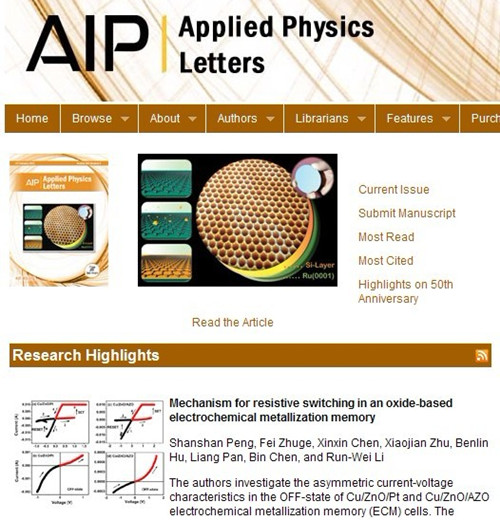A comparison of the asymmetric OFF-state current-voltage characteristics between Cu/ZnO/Pt and Cu/ZnO/Al-doped ZnO (AZO) electrochemical metallization memory (ECM) cells demonstrates that the Cu filament rupture and rejuvenation occur at the ZnO/Pt (or AZO) interface, i.e., the cathodic interface. Therefore, the filament is most likely to have a conical shape, with wider and narrower diameters formed at the anodic and cathodic interfaces, respectively. It is inferred that the filament growth starts at the anode surface and stops at the cathode surface. Our results indicate that oxide-based ECM cells strongly differ from sulfide- and selenide-based ones in the resistive switching mechanism.
This work was supported by State Key Research Program of China (973 Program, 2009CB930803), National Natural Science Foundation of China (61006082 and 60901047), Zhejiang (Y4090434) and Ningbo Natural Science Foundations, Zhejiang Qianjiang Talent Project (2010R10030), Chinese Academy of Sciences (CAS), and State Key Lab of Silicon Materials (China), and Science and Technology Innovative Research Team of Ningbo Municipality (2009B21005).

Highlight

Schematic ideal I–V characteristics